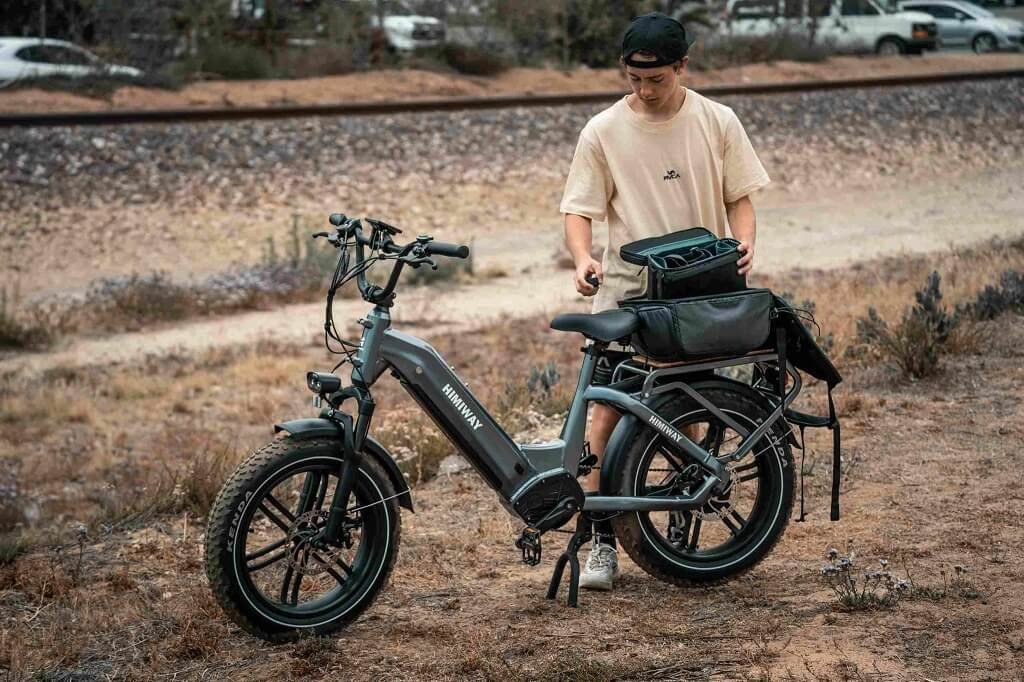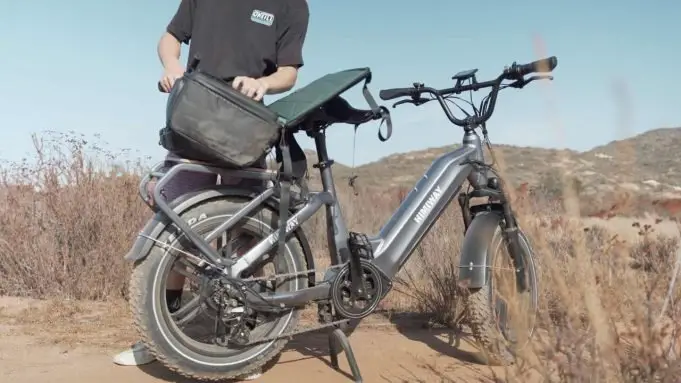One of the debated aspects of electric bikes is how suitable they are for carrying heavy loads. Can they be used to transport stuff on long-distance trips? If so, does this affect battery life? The good news is this is not a problem when there are heavier options like a fat-tire electric bike. This is stronger and built specifically for the uncomfortable aspects of commuting and offroading.
Wider tires and a sturdy build are among the unique qualities of fat tire e-bikes. With these, the subject of load-bearing is adequately addressed. These features and others make them perfect for smooth navigation on rough and rugged terrain. But what makes them so powerful and reliable? This article explores the strengths of fat tire e-bikes and why riders love them so much.
What Makes an Electric Fat bike Better for Transporting Loads?
For many reasons, electric fat bikes are a great way to commute while carrying a ton of stuff. Some of them include the following:
Higher Payload Capacity
The payload capacity refers to the maximum weight the e-bike is built to support, including yours and that of your cargo. When it comes to load-bearing, this is one of the unique points of fat tire electric bikes. They have larger frames with rear racks and baskets intended for bigger items. The payload capacity of the Himiway Zebra is 400 lbs, which means you and any cargo within this limit can ride smoothly.
To enjoy this, ensure you know the payload capacity of your e-bike before loading it up. It is usually listed among the bike specs. You should also consider the type of cargo or gear being transported. Certain items may require additional safety features, such as straps, bungee cords, or cargo nets. This will ensure they are securely fastened to the bike and can not shift or fall off during transit.
Sturdy Frame
Most e-fat bikes are built with a sturdier frame than average. This is to ensure durability and allow them to handle the roughest terrains without buckling or breaking. E-fat bikes are often built with different materials for strength and higher payload capacity. Some of the most commonly used are aluminum and carbon fiber.
Aluminum is a perfect choice because it is as strong as steel yet much lighter. E-bikes made with this material are of lighter weight and usually resistant to rust. Also, they are often easier to lift up and down for storage as needed. Himiway e-bikes are made from upgraded 6061 aluminum, which is one of the strongest and lightest options to explore.

Wider Tires
Fat tire e-bikes have wider tires than traditional ones, which measure at least 3″. More width means more tire treads come in contact with the ground’s surface, improving balance when transporting loads with your e-fat bike. Additional stability is provided by the tires through even distribution of weight over a larger surface area. This ensures you don’t lose balance as you commute with heavy stuff that could sway you.
The tires of an e-fat bike also improve traction on slippery and uneven surfaces. This allows you to continue moving, even in unfavorable weather conditions like snow and rain. Instead of being stuck or toppling over, you can progress steadily with an e-fat bike.
Suspension System
The suspension system of an electric bike helps with transporting loads by improving handling, shock absorption, and ride quality. It takes care of weight distribution, which changes when you load up your e-bike and can affect your handling and control.
A suspension system prevents the bike from bouncing too much and losing traction. This helps with erratic vibrations from traveling over rocky terrain, allowing you to proceed smoothly and without damage to your load. E-fat bikes often use either a front, rear, or full suspension. The Himiway Cobra Pro uses a four-bar linkage suspension and is one of the first e-bikes to do so.
High Motor Power
Motor power is a key factor in determining the performance of an electric bike, particularly when it comes to transporting loads. The motor is responsible for providing the torque it needs for propulsion. It also helps the e-bike overcome the resistance created by factors such as riding weight, load, and terrain type.
Higher motor power translates to greater acceleration and higher top speeds. This can be particularly helpful when transporting heavy loads. A more powerful motor can provide the additional force necessary to maintain a consistent speed, even when climbing steep hills or facing strong headwinds. Aside from enhancing performance, motor power can also impact the range of an electric bike.
Battery Range
Battery range is another important factor to consider when using an electric bike for transporting loads. This refers to the distance you can travel on a single complete battery charge. The achievable range is influenced by several factors, such as the capacity of the battery, the power of the motor, your riding weight, and the terrain. E-fat bikes often provide enough range for your long-distance commutes.
The pressure of the load on the e-bike will normally make the motor output even more power, which can reduce range and battery life. However, e-bike manufacturers partner with companies like Samsung to create more high-capacity options for e-fat bikes. The Himiway Cobra, for instance, can provide a range of more than 80 miles on its automobile-level 48V 20Ah Samsung/LG lithium-ion battery.
Conclusion
When it comes to transporting heavy loads, fat tire e-bikes are an ideal choice for many reasons. First, they are versatile options built for riding in extreme conditions. Most of their parts are large and of higher capacity than the average e-bike. This enables them to provide a smooth and balanced riding experience, despite rough terrain or the load you’re commuting with.
To enjoy using one, ensure to get the best e-bikes with fat tires for your commute. This is the one with adequate motor power and battery range to support your riding. You can visit our online store and browse through our collection to see other exceptional options.










![What Does Aviates Stand for in Aviation? [The Art of Flying] Aviates](https://tourinplanet.com/wp-content/uploads/2024/07/Aviates-100x75.jpg)














![25 Best Peruvian Foods You Must Try In Peru [With Recipes] Peruvian Food](https://tourinplanet.com/wp-content/uploads/2024/07/Peruvian-Food-100x75.jpg)


